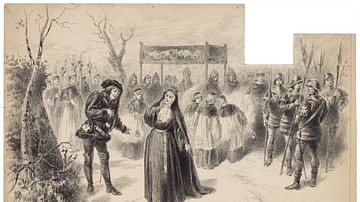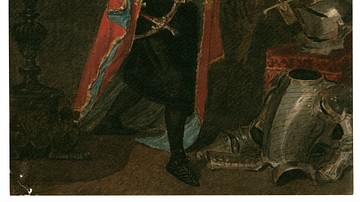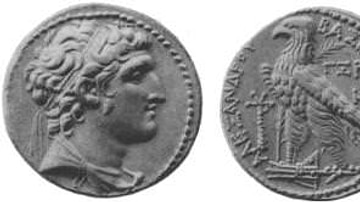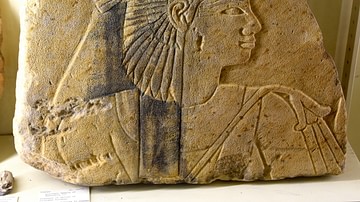Search
Search Results

Image
Richard III & Henry VII, Stained Glass Window
A stained glass window showing the two rivals for the throne of England at the end of the Wars of the Roses (1455-1487 CE). In 1485 CE at the Battle of Bosworth, Richard III of England (r. 1483-85 CE) was defeated and killed while the victor...

Image
Richard III Woos Lady Anne - Richard III, Act I Scene II
Richard III of England woos Lady Anne Neville in Act I Scene II of William Shakespeare's The Tragedy of Richard III (c. 1594), drawing by Herbert Railton, circa 1890.
Folger Shakespeare Library.

Definition
Giuseppe Verdi
Giuseppe Verdi (1813-1901) was an Italian composer best known for operas such as Rigoletto, La traviata, and Aida. Verdi is noted for his powerful scores and strong characters where anti-heroes lead the dramatic action through often complex...

Image
King Tiglath-pileser III
An alabaster bas-relief depicting the Assyrian king Tiglath-pileser III. From the central palace, Nimrud (ancient Kalhu), Mesopotamia, northern Iraq. Neo-Assyrian era, circa 728 BCE. (The British Museum, London)

Image
Tiglath-pileser III, Submission of Enemy
An alabaster bas-relief depicting the Assyrian king Tiglath-pileser III stands over a captured enemy. The cuneiform inscription describes an Assyrian campaign in Iran 744 BCE. From the central palace at Nimrud (ancient Kalhu), reused and...

Image
Captured Flocks from Arab Enemies of Tiglath-pileser III
Sheep and goats, captured in a campaign against the Arabs are driven back to the Assyrian camp. This scene decorated the palace of King Tiglath-pileser III (reigned 744-727 BCE. Assyrian, about 728 BCE. From the Central Palace at Nimrud (ancient...

Image
Richard III is Tormented by the Ghosts of His Victims - Richard III, Act V, Scene III
Richard III of England is tormented by the ghosts of his victims on the eve of his death at the Battle of Bosworth, in Act V Scene III of William Shakespeare's play The Tragedy of Richard III (c.1594), watercolors by Alexandre Bida, 1893...

Definition
Seleucid Empire
The Seleucid Empire (312-63 BCE) was the vast political entity established by Seleucus I Nicator ("Victor" or "Unconquered", l. c. 358-281 BCE, r. 305-281 BCE), one of the generals of Alexander the Great who claimed a part of his empire after...

Image
Sculpture of King Thutmose III
This is a rare example of an Egyptian temple sculpture, in which the figures face in 4 different directions. This suggests that it stood in the middle of a room. Three persons are represented twice. King Thutmose III (now headless) stands...

Image
Egyptian Relief of Princess Sitamun, daughter of Amenhotp III
This is a sandstone block fragment which was brought from the temple of Egyptian king Amenhotep II. The temple lies on the west bank of the Nile river at Thebes. There is a raised relief, depicting the head of Princess Sitamun, daughter of...